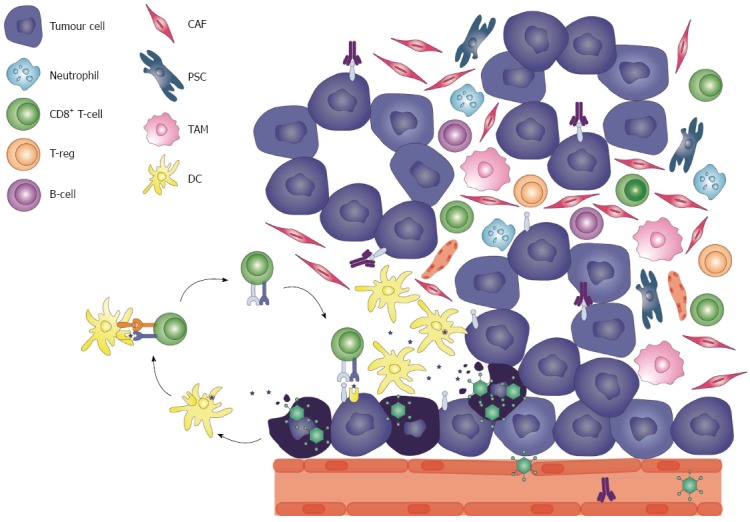Figure 1.

Synergistic effects of viro-immunotherapy. Systemic administration of a tumour-targeted oncolytic virus (TOV) leads to vasculature destruction allowing the invasion and infection of the tumour cells. As the TOV selectively replicates within a tumour cell, it infects neighboring cells leading to the amplification of the virotherapy and induction of the innate immune system. Direct oncolysis allows the release of tumour-associated antigens into the microenvironment, which are presented by antigen-presenting dendritic cells (DCs) to naïve T cells in the draining lymph nodes, activating the adaptive tumour-specific response. The administration of an immune checkpoint blockade antibody such as an anti-PD-L1 antibody provides an added benefit of reversing T cell anergy. This allows the antitumour response induced by the virotherapy to be enhanced and sustained. The combination of viro-immunotherapy may have significant synergistic effects in such an immunosuppressive microenvironment as seen in pancreatic ductal adenocarcinoma. CAF: Cancer-associated fibroblast; ; PSC: Pancreatic stellate cell; TAM: Tumour-associated macrophage.
